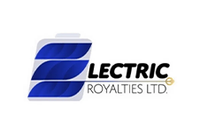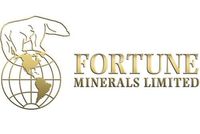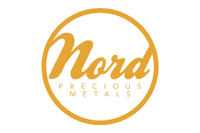CRU: Europe’s EV Sector Could Drive Cobalt Demand Growth
One of the big surprises during the first half of the year has been the demand recovery and expansion in the European EV sector, said George Heppel of CRU.
Despite a slowdown in electric vehicle (EV) sales globally on the back of the coronavirus pandemic, demand for cobalt saw a silver lining in the first six months of the year.
One of the big surprises during the first half of the year has been the demand recovery and expansion of the European EV sector, according to George Heppel of CRU Group.
“More EVs were sold in the first half of 2020 than in the entire year of 2018. By contrast, EV sales in China remain largely at the same level in 2020 as 2018,” Heppel told the Investing News Network.
“Europe seems to be the new engine of cobalt demand growth, and we have upgraded our demand forecast accordingly,” he commented. That said, CRU still expects the cobalt market to exhibit modest oversupply in 2020 and the coming few years.
In terms of supply, Heppel said that with the exception of the Ambatovy mines and a couple of small projects, the market is mostly back to normal production levels.
“The shutdowns in Q2 very neatly balanced out the concurrent decline in demand seen during the same period, and it is only once projects began to reopen in early Q3 that prices began to fall and ultimately hit a market low of US$13.80 to US$14 per pound,” he said.
Comparing cobalt’s performance to base metals, Heppel said cobalt remained relatively strong in the first half of 2020, slipping just 8 percent from the beginning of the year compared to a more than 20 percent fall for base metals like copper.
“This is mainly due to COVID-related supply shutdowns in the cobalt metal sector, most notably Ambatovy, CTT, Voisey’s Bay and Raglan. These were able to offset lower demand during the lockdowns.”
In recent weeks, cobalt hydroxide prices have seen an uptick due to significant disruption to Durban, which is South Africa’s main port for shipping the material from the Democratic Republic of Congo (DRC) to Chinese refineries.
This has not only impacted cobalt, but the wider metal market, as perishable goods are given shipping priority over metals and minerals, Heppel explained. There are other ports that can be used instead of Durban, but it will take time for the necessary freight forwarding arrangements to be set up.
“We’re hearing a lot of reports of shipments being delayed by up to two months and vessels leaving the port half-loaded due to a shortage of labor,” Heppel said.
Heppel added that this bottleneck is likely to persist well into August and September. “As a result, we will continue to see a significant rise in cobalt hydroxide prices, with payables likely to enter the 80s and 90s in percentage terms.”
It could also likely spur on a modest gain in metal prices, according to the expert.
“We are hearing reports of metal increasingly being sold into China for conversion into chemicals in lieu of using hydroxide,” he said.
However, for CRU, the alloy-grade market for cobalt metal will likely remain weak due to very poor demand from the superalloy sector this year.
As for what is ahead in the next few months, Heppel said the Durban bottleneck isn’t going to be permanent, and disruption will likely last for a couple of months at most.
“After that I think we can expect the hydroxide market to soften somewhat,” he said.
Another catalyst to continue to pay attention to is the EV sector in Europe, which according to the expert, continues to defy all expectations.
“There is a chance that (the EV sector in Europe) overtakes China as the biggest new energy vehicle market in the world this year,” he said. “It’s worth keeping an eye on.”
Don’t forget to follow us @INN_Resource for real-time news updates.
Securities Disclosure: I, Priscila Barrera, hold no direct investment interest in any company mentioned in this article.
Editorial Disclosure: The Investing News Network does not guarantee the accuracy or thoroughness of the information reported in the interviews it conducts. The opinions expressed in these interviews do not reflect the opinions of the Investing News Network and do not constitute investment advice. All readers are encouraged to perform their own due diligence.


